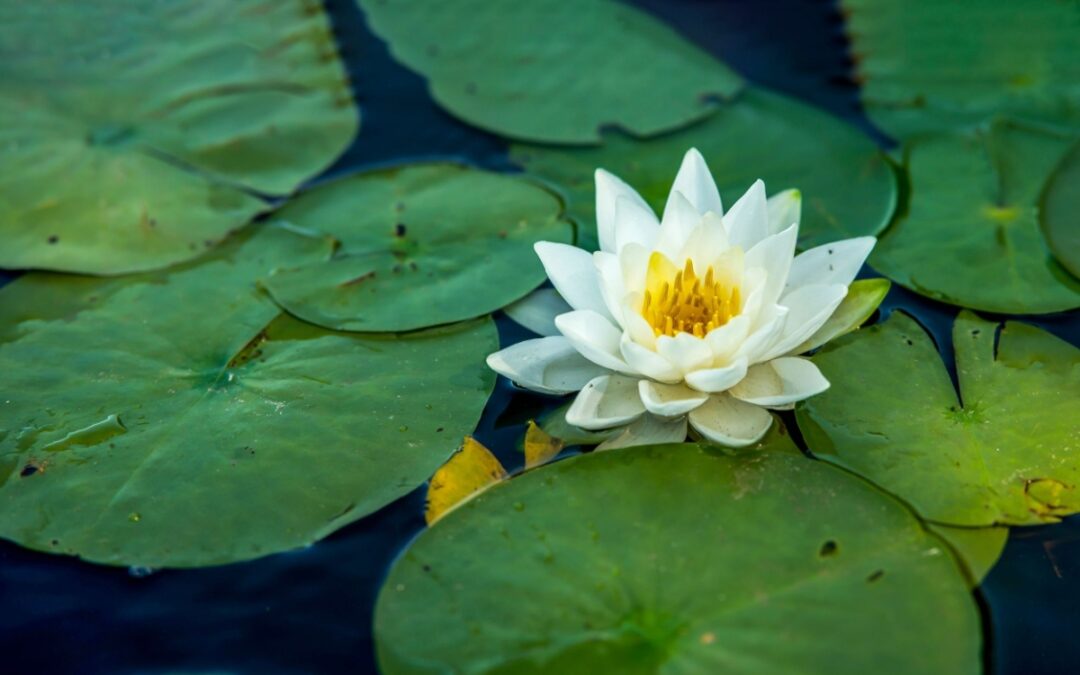As spring unfolds and summer approaches, lush green foliage emerges, and colorful flowers bloom, transforming ponds into captivating ecosystems. While aquatic plants offer a multitude of benefits, overgrowth or the introduction of non-native species can disrupt the delicate balance of the pond’s ecosystem. To ensure your body of water flourishes, it’s important to familiarize yourself with the different types of aquatic plants for ponds — submerged, emergent, and free-floating. Each type plays a specific role in the pond’s health, contributing to water quality, oxygen levels, habitat creation, and more.
Submerged Aquatic Plants
Submerged plants live almost entirely under the water’s surface, with only a few parts occasionally breaching the waterline. These types of aquatic plants are vital for oxygen production and help keep the water clear by absorbing nutrients that would otherwise feed algae. Examples include Hornwort, which is known for its dense, feathery foliage, and eelgrass, for its long, ribbon-like leaves. As they anchor themselves to the bottom of the pond, they create a lush underwater landscape that supports a variety of aquatic life, including fry and juvenile fish.
While these types of aquatic plants can be highly beneficial for ponds, you must control their growth. Excessive growth can deplete the water’s oxygen levels, potentially leading to fish kills. Dense plant mats can also hinder water flow and trap sediments, contributing to siltation and reducing water depth. Recreational activities such as fishing also become difficult when these pond plants get out of hand. As a pond owner, it’s important to maintain a balance in the growth of submerged plants.
Emergent Aquatic Plants
Emergent pond plants have their roots nestled in the submerged soil while their stems and leaves proudly rise above the water’s surface. These types of aquatic plants provide critical habitat and breeding grounds for many species of wildlife, including birds and amphibians. They also serve as effective filters, trapping sediment and pollutants from the water, and help prevent shoreline erosion.
Cattails and bulrushes are well-known examples of emergent plants for ponds in Florida, thanks to their tall stature and distinctive flowering heads. Water lilies are another popular aquatic plant for ponds, as they come in a variety of colors and sizes, have large, showy flowers, and help control algae growth.
Free-Floating Aquatic Plants
Free-floating plants, as the name suggests, do not root in the soil but instead float on the water’s surface. This group includes duckweed and watermeal. These floating plants provide shade and reduce water temperature, creating a more balanced ecosystem. Additionally, their expansive leaves offer shelter to fish and reduce the growth of unwanted algae by limiting sunlight penetration.
Just like submerged aquatic plants, you must carefully monitor the growth of floating plants. Their rapid reproduction rates and extensive coverage can significantly reduce oxygen levels in the water and limit light penetration. To mitigate these effects, installing a fountain or aerator can be highly beneficial. These devices help keep the water moving, thereby improving oxygenation and preventing the stagnation that allows free-floating plants to proliferate unchecked.
How to Control Invasive Plants
While many aquatic plants offer a wealth of benefits, some non-native species can become invasive, disrupting the pond’s natural balance. These aggressive growers can crowd out native plants, deplete oxygen levels, and even clog waterways.
If you notice invasive plants in your pond, our professionals will use the following techniques to get rid of the unwanted growth:
- Manual Removal: We will carefully pull out invasive plants by hand or specialized equipment, removing the entire plant, including the roots, to prevent regrowth. This method is most effective for small infestations or for targeting specific plants.
- Biological Control: We may recommend implementing biological controls to prevent future issues. For example, we may suggest adding certain fish species, such as grass carp, to help control invasive plants.
- Herbicides: As a last resort, we will use herbicides specifically formulated for aquatic environments to control invasive plants.
Enhance Your Pond With the Best Aquatic Plants
With the right selection of aquatic plants, your pond can be transformed into a thriving ecosystem teeming with life and visual appeal. Here at Aquagenix, we understand the importance of choosing the perfect plants for your unique pond environment. Our knowledgeable staff can help you identify the ideal mix of submerged, emergent, and free-floating plants. We can also provide professional weed removal services to help you combat invasive plants and restore balance to your pond ecosystem. Contact Aquagenix today to request a consultation for an aquatic planting appointment and sit back as your pond flourishes before your eyes!


Recent Comments